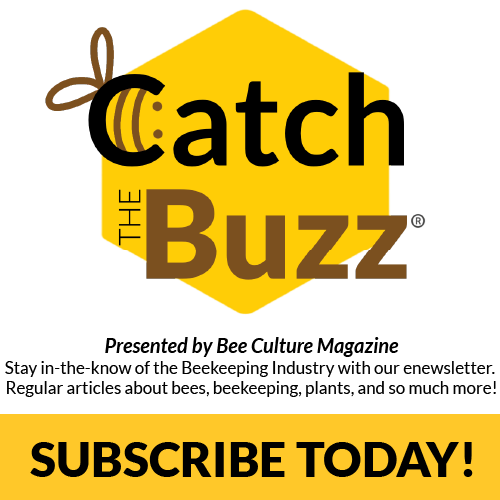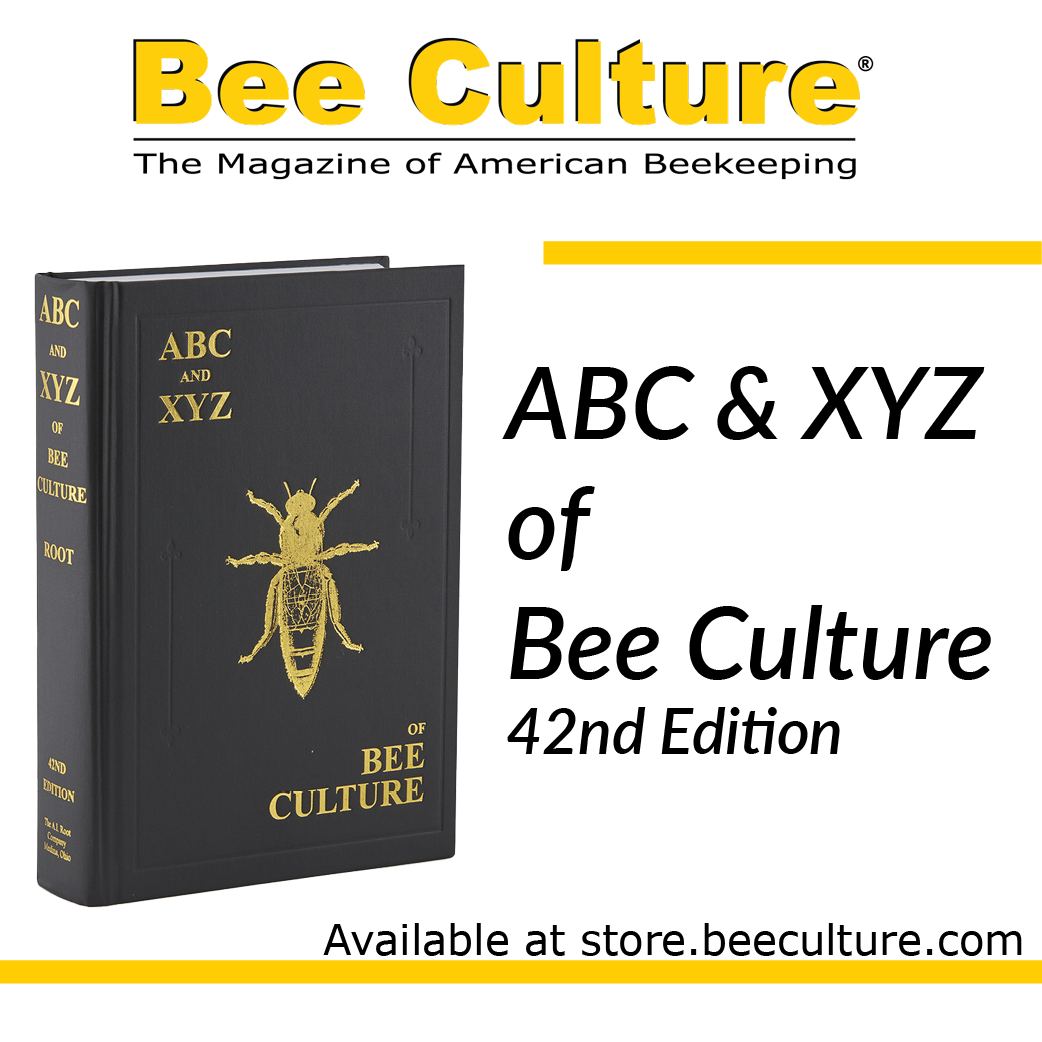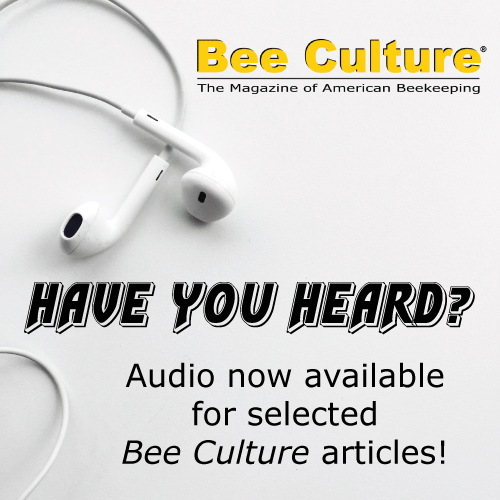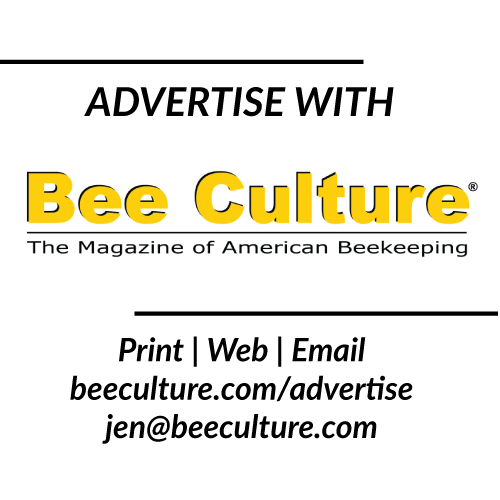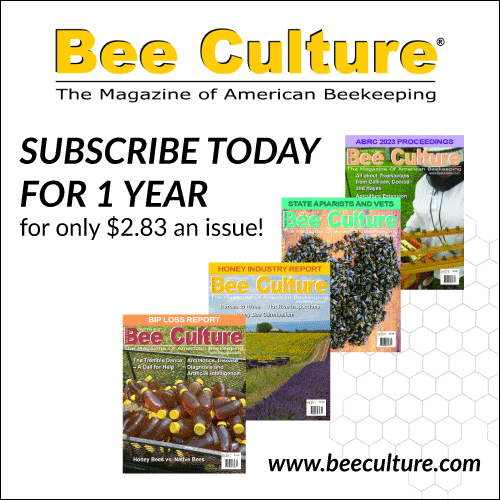Click Here if you listened. We’d love to know what you think. There is even a spot for feedback!
Read along below!
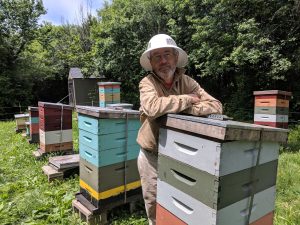
Chemical-Free Yellow Jacket Removal
A Valuable Service Beekeepers Are Uniquely Suited to Perform
By: Ross Conrad
Beekeepers have a tendency to be honey bee centric. Have a swarm hanging from a tree in your yard? We’ll be right over. But call a beekeeper to remove a yellow jacket nest and we’re typically not interested. This leaves the person calling for help in a conundrum: do they call a professional exterminator or save money and pick up a can of toxic pesticide bug spray at the hardware store and attempt to do the job themselves? I would suggest that when we pass up the opportunity to help a member of our community with a yellow jacket problem, we fail to show that we beekeepers are more than a one-trick pony and demonstrate the varied benefits beekeepers can bring to the community. We also forfeit the chance to help prevent the introduction of additional toxic pesticides into the environment, and we give up on a potentially profitable service that can help diversify our income.
As beekeepers, we are already conditioned and equipped to deal with stinging insects. While different in many ways, yellow jackets are surprisingly similar to honey bees. While yellow jackets are carnivorous and will eat insects both dead and alive, they also feed on fruit, nectar and honeydew. Their stingers are barbed like a honey bee’s, but the barbs are so small that they can typically sting repeatedly, and only occasionally does a stinger become lodged and pull free of the wasp’s body. Yellow jacket venom, like most bee and wasp venoms, is primarily dangerous only to those who are hyper-allergic. Thankfully, the protective clothing that protects you from bee stings will also protect you from yellow jackets.
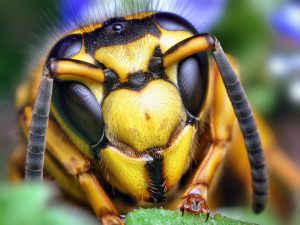
Face of a southern yellow jacket queen (Vespula squamosa)
Yellow jackets are social wasps and participate in cooperative brood care. The yellow jacket queen is larger than the workers and is tasked with doing all the work to build and provision a nest on their own in Spring. Once the first litter of worker wasps reach maturity, they take over the nest building and food gathering duties. Like honey bees, male yellow jackets are haploid and females are diploid allowing female worker yellow jackets to lay eggs that develop into males.
While yellow jackets build nests of hexagon shaped combs similar to honey bees, they construct their nests by chewing naturally occurring wood fibers that when mixed with their saliva becomes a pulpy substance they are able to form into comb. A grey paper envelope surrounds the combs that make up their brood nest. Like honey bees, yellow jackets produce warning pheromones which suggest that smoke can aid in dealing with them.
There are several types of yellow jackets and they are all black with either white or yellow markings. The most common have yellow markings on their face, thorax and abdomens and they make their nests either in the ground or up in trees, under the eaves of roofs, or other above ground structures they deem suitable. The yellow jackets with white markings on their face, thorax and abdomens are often called bald-faced hornets. This is a misnomer since all yellow jackets (whether they have yellow or white markings) are technically wasps identified by the fact that they have narrow waists connecting their thorax to their abdomen.
Of all the stinging insects normally found in North America, the bald-faced hornet’s sting seems to hurt the most. This is perhaps because the bald-faced hornet is larger and therefore has a larger stinger and venom sack. The bald-faced hornet also has a unique defense in that it can squirt or spray venom from the stinger into the eyes of nest intruders causing immediate watering of the eyes and temporary blindness.
Yellow jackets tend to be more defensive than honey bees especially in late Summer/early Autumn when their food sources are becoming scarce and their nest size is at its maximum. Beekeepers often will see yellow jackets attempting to access honey bee hives at this time of year. While strong colonies are able to resist the advances of yellow jackets effectively, the size of the entrance of a hive can be reduced to help weaker colonies defend themselves. Since late Summer and early Autumn is the time of year when yellow jackets become more noticeable, it is when they are more likely to cause problems for people and elicit complaints from the public who then may look for a local beekeeper to deal with them.
When removing a yellow jacket nest, it is best to do the job at night. Most of the time, just like honey bees, yellow jackets will all have returned to their nest for the evening since they are unable to navigate safe flight activity without the aid of light. As a result, a yellow jacket nest that is disturbed at night will trigger the guard wasps to crawl out of the nest to defend the colony. Like ants, bees and yellow jackets will crawl all over the place, but they will not fly unless there is visible light to guide them. Also like honey bees, yellow jackets are unable to see the color red, so a red light will provide the wasp remover with a critical advantage permitting them enough light to see and work without allowing the yellow jackets enough light to take to the air.
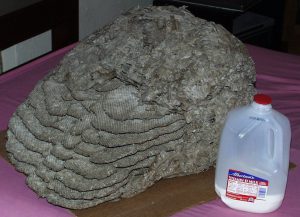
Two-year yellow jacket nest, with a one-gallon (3.8 liter) container for size reference. Collected by Alabama, USA, 2007. Dimensions are approximately 18 inches by 24 inches by 12 inches (46 cm by 61 cm by 30 cm). Source: Wikipedia
For those with patience, a commercially available yellow jacket trap can be deployed. For those who prefer a faster method, an easy way to remove small, above ground nests is to place a bag around the nest and pull the nest away from its anchoring point on whatever structure it is attached to. For larger nests, a hive tool or for really big nests, a spatula can be used to sever the connection between the nest and the structure while holding the bag directly under it so the nest will fall to the bottom of the bag. Since the yellow jackets are restricted to crawling, you will have three to four seconds to quickly close the bag and seal the opening by tying it off if it is plastic, or folding it down if made of paper in order to seal the wasps inside. The bag containing the wasps should then be placed inside another container, such as a garbage can with a lid, since they can potentially chew through the bag during the night.
For ground nesting wasps, the easiest approach is to smother the colony. A large sheet of plywood can be placed on the ground over the entrance area at night when all the wasps are in the nest. For uneven ground, a sheet or blanket with the edges rolled up or folded a bit, can be placed down first to act like a gasket and seal gaps along the ground preventing any wasps from finding a way out from under the plywood. It is a good idea to weigh down the plywood with a rock or cement block to help ensure a good seal with the ground surrounding the colony’s entrance and to prevent a strong breeze from moving the plywood. The plywood should be left in place for at least a couple weeks to ensure all the wasps are dead before removal.
For the entrepreneurially inclined, there are pharmaceutical companies that will pay for wasps gathered in a manner that preserves the integrity of the wasp venom, so they can be used to manufacture allergy medications. One company, Jubilant HollisterStier, will pay $800-$1,000 per pound for yellow jackets, and up to $1,400 per pound for rarer wasps and hornets (and you thought that a three pound package of honey bees for between $125-$200 was expensive!). Rather than remove the yellow jackets at night, this work should take place during the day so that primarily female worker wasps are collected since the males do not have stingers. A bee vacuum that collects the wasps uninjured is the perfect tool for the job, since the wasps must be flash frozen alive in order to preserve the integrity of the venom for pharmaceutical use. Since the frozen insects can be stored for up to 24 months, collections obtained from numerous nests can provide a potentially lucrative sideline. Be sure to contact the company you choose to work with ahead of time since they have specific protocols and instructions for wasp collection, storage, documentation and shipping.
It is unfortunate that yellow jackets are widely considered a nuisance. Without them, we would be overrun with harmful insect pests since to feed their young, the wasps kill large numbers of caterpillars and other insects that harm cultivated and ornamental plants. By including wasp and hornet removal services to their skills, beekeepers can add to the industry’s social value and provide a valuable community service, while developing the potential for additional income streams all at the same time.
Ross Conrad is author of Natural Beekeeping and The Land of Milk and Honey: A history of beekeeping in Vermont. He will be speaking for the Western New York Honey Producers, Inc. in an event open to the public on November 18. Check out the calendar for details: https://www.beeculture.com/calendar-of-events/

